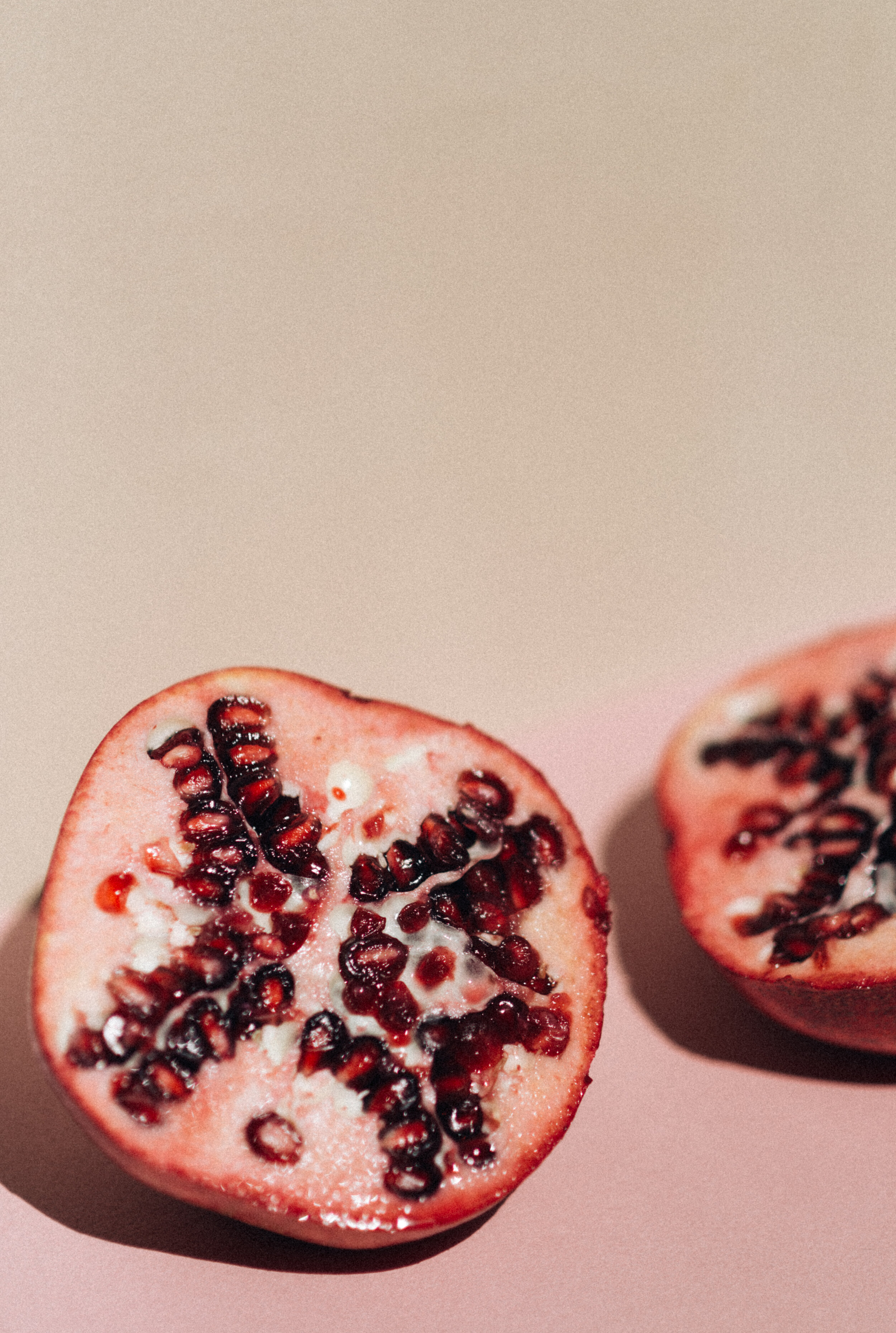Descriptions of Plants: Pomegranate
The Jewel of Winter
The pomegranate (Punica granatum L.) is a fruit that has been praised for its therapeutic benefits for thousands of years, a biblical shrub native to the Middle East and Mediterranean regions. Known as the “fruit of eden” and the “jewel of winter”, it was even considered for some time as THE apple of Eden, and while this is disputed, it speaks to the reverence that people have been attributing to its healing benefits for millenia. Its seeds were believed to have resurrecting powers by the Babylonians while the Persians believed pomegranate granted invincibility in battle, and it symbolized longevity and immortality by the ancient Chinese.
With modern techniques able to dissect the various components of the pomegranate, it is easy to see why our prehistoric forebears were enamoured with pomegranate as a medicinal and therapeutic agent. It seems that the shrub was almost designed to be utilized for human health. Its fruit, seeds, peel, leaves, flowers, roots, and bark all contain a plethora of components that are linked to health, but overall it is the antioxidant and anti-inflammatory properties of the fruit, peel, and seed oil that have received the most research. However, other studies have shown pomegranate to also display antimicrobial, antimutagenic, and antidiabetic properties that demonstrate how well-rounded the plant really is.
As an ingredient in our Extrait de Maison, we are particularly well-versed in the properties of the seed oil, a wonderfully unique oil with an abundance of full-spectrum antioxidant compounds, primarily in the form of polyphenols like tannins, flavonoids, alkaloids, and organic acids. But what truly separates pomegranate seed oil from other seed oils is its primary constituent: punicic acid. Punicic acid (aka Omega 5) is only found in pomegranates and snake gourds, although the concentration is significantly higher in pomegranates. A conjugated linolenic acid, it is a special fatty acid that has been shown in numerous studies to soothe inflammation and promote the regeneration of the epidermis (the outermost layer of the skin), and its antioxidant prowess has been shown to effectively protect against ROS-inducing environmental factors like pollution and UV-B radiation. And as for any oil, its cultivation and extraction influence the oil’s potency, which is why we are proud to be able to source it from one of our dedicated Biodynamic® partners.
After being blown away by the oil, we have also been experimenting with what is typically a waste by-product of its production: the peel. The rind of the pomegranate has only recently begun to be studied and the results are showing incredible antioxidant properties that could be utilized either topically or internally. Full of phenolics, ellagitannins, proanthocyanidins, complex polysaccharides, and flavonoids pomegranate peel exhibits strong antioxidant, anti-mutagenic, and antimicrobial properties. We can’t wait to share our own findings after our own research.
We were so impressed by this plant that we planted our own shrubs in our Maison/Made garden last year. We are curious, though not very optimistic, to see whether they survived the harsh winter of this year since they do tend to prefer a milder Mediterranean climate. However we are determined to try to find a home for this storied and historical plant in our garden, as we have a strong feeling that it’s wonderfully generous nature will also have an impact on the pollinators and soil within which it will live.
Sources:
-Mahesar, Kori, Sherazi, Kandhro, Laghari. (2019) Fruit Oils: Chemistry and Functionality. Springer.
-Baran, R.; Maibach, H. (2017) - Textbook of Cosmetic Dermatology - Fifth Edition. CRC Press.
-Finglas. (2015) Food Chemistry. Elsevier.
-Domingo. (2009) Food and Chemical Toxicology: Toxicological evaluation of pomegranate seed oil. Elsevier.
-Longtin. (2003) Journal of the National Cancer Institute, Vol. 95, No. 5. Oxford University Press.
-Viuda‐Martos, Fernández‐López, Pérez‐Álvarez. (2010) Pomegranate and its Many Functional Components as Related to Human Health: A Review. Wiley Online Library.
-Colla, Guo, Kondo, Martinez-Gómez, Pennisi. (2013) Scientia Horticulturae: Pomegranate and its Many Functional Components as Related to Human Health: A Review. Elsevier.
-Wang, Ding, Liu, Xiang, Du. (2010) Fruit, Vegetable and Cereal Science and Biotechnology: Pomegranate: Constituents, Bioactivities and Pharmacokinetics. Global Science Books.
-Ashokkumar. (2013) Ultrasonics Sonochemistry: Optimization of ultrasonic-assisted extraction of pomegranate (Punica granatum L.) seed oil. Elsevier.



